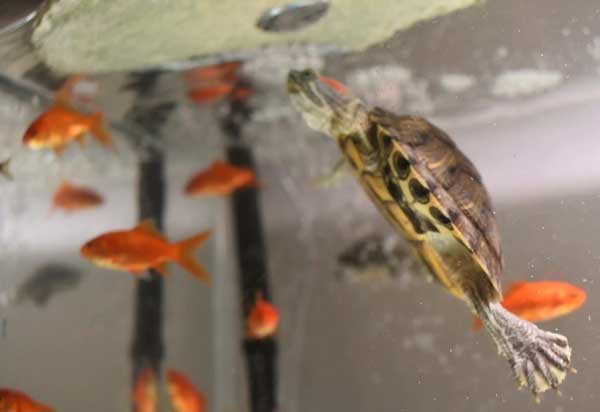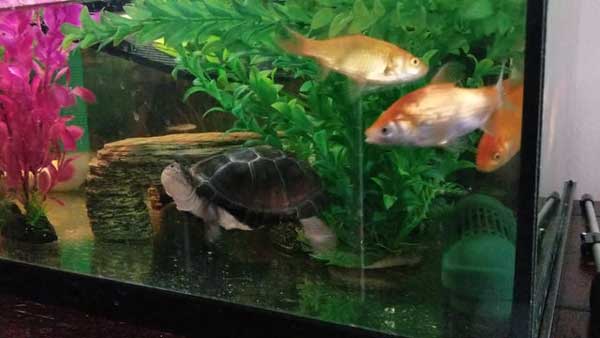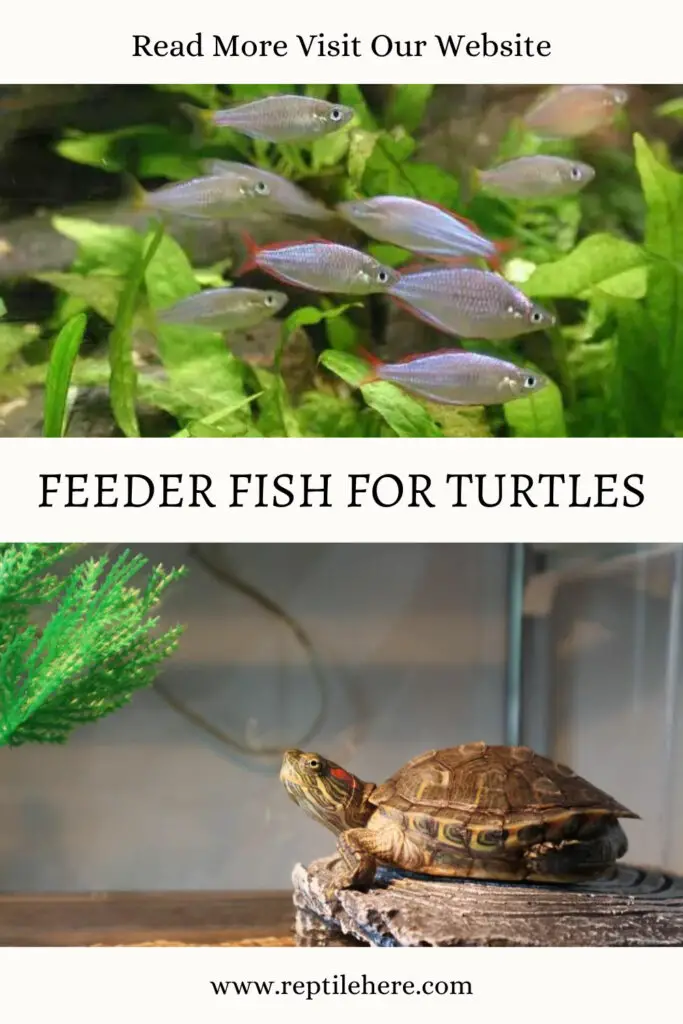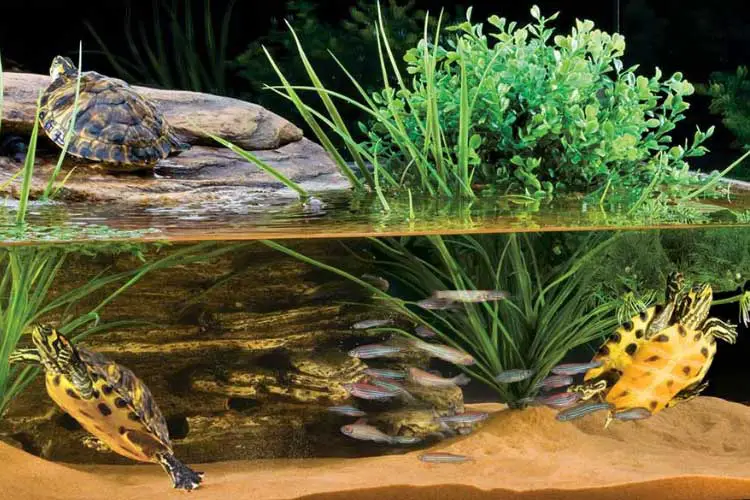Feeder Fish For Turtles: Are They Safe Enough?
Turtles are great pets with a unique diet. As the eating habits will be different in captivity than in the wild, turtle owners need to be cautious about it. Even inappropriate feeding of fish might also cause the death of your turtles.
Now, what is feeder fish for turtles: are they safe enough? Feeder fish can be referred to as protein or calcium supplements for turtles. But feeding wild, boney, fat, and thiaminase-rich, fast-moving, and too much feeder fish may cause serious health issues for your turtles.
In this article, we will talk about safe and unsafe feeder fish for turtles. Thus, if you also have a turtle as a pet and want to feed it alive fishes, you should go through this article.
What Are Some Good Feeder Fish For Turtles? [What Is Feeder Fish?]
Contents
Feeder fish refers to the type of live fish that you feed your carnivorous aquarium pets. They can fulfill the 30-40% protein requirements in the turtle’s diet.
But why should you use alive fish instead of dead ones? Because, for catching live fish, turtles will run after those fish. It will be a beneficial exercise for the wellness of your turtles.

Likewise, there are numerous options for live foods that you can choose from. But ensure those have less fat and thiaminase content and are not fast-moving, and wild. Some examples are:
- Bluegills
- Killifish
- Guppies
- Mosquitofish
- Crappies
- Platies
- Bass
How To Give Feeder Fish To Turtles?
Though it’s a straightforward task to give feeder fish to turtles, you need to be careful about several factors and follow the steps below.

Step 1. Be Cautious About Harmful Feeder Fish
The first and foremost factor is you need to know which feeder fishes can be harmful to your turtles. You should never pick any kind of wild fish as there are probabilities of spreading bacteria through those.
Generally, we suggest avoiding fishes containing high-fat content, thiaminase, bones, and having high speed. Check the table below.
| Fish Types | Examples |
| High in Fat content | Rosy barbs, goldfish, and kribensis cichlids |
| Thiaminase containing | Bullhead catfish, carp, goldfish, gizzard shad, spottail shiners, and fathead minnows for turtles |
| Boney fish | Angelfish, bichir, and cockatoo cichlid |
| Fast moving | Tiger barb, zebrafish, and neon tetra |
Step 2. Use Another Tank For Feeding
- Turtles are messy eaters, and thus their small turtle tank may get dirty frequently. Therefore, you should choose another tank that is smaller than the main one and spacious enough for your floating turtle
- Then take the feeder tank and fill it with enough water
- Release the feeder fish there
- Next, you must take your turtle out of the main tank and put them in the feed tank. This way, the water in the main tank will remain clean for extended periods
- Make sure you are not scaring your turtles while supplying the feeder fish. Be more cautious while providing feeder fish for snapping turtles, as they can bite your finger off if they get scared.
Still having doubts? Here’s a video of feeding turtles live fish just to clear out the air!
How Many Feeder Fish Can A Turtle Eat?
Turtles need only 30-40% fat supplement in their regular diet. If you feed them more fatty food, it may cause numerous difficulties for them. Also, feeding feeder fish regularly will create dependency on this type of food.
Besides, they will also lose their appetite for their regular food. However, feeder fish can never fulfill the nutrient requirements solely. That’s why make sure you are not feeding these too frequently.

Generally, feeding 3-4 fish per month is a good quantity. More than this amount will create different types of issues like loose appetite in regular food, Vit-E and thiamine deficiency.
Can Red-Eared Sliders Eat Feeder Fish?
Yes. Red-eared sliders can eat feeder fish. Mainly their main diets consist of leafy vegetables like parsley, lettuce, kale, and dandelion greens. But you can also feed them feeder fish as calcium supplements. Some common feeder fish for red-eared sliders are guppies, goldfish, and minnows.
Generally, young red-eared sliders are more in need of calcium supplements as their bones are in a growing phase. But with the increasing age, you should lessen the amount of feeder fish for them.

Because, as they age, carnivorous foods can cause numerous difficulties in their body. That’s why you should replace their food habit feeder fishes with a variety of leafy and green vegetables.
Turtles Won’t Eat Feeder Fish? What To Do?
Generally, when you release live fish in the turtle tank, turtles become excited to eat them. In the wild, there is less scope for them to catch any fish. However, in the small turtle tank, it becomes easy for floating turtles to prey on those alive fish.

But sometimes, exceptions can also happen, like they don’t show any interest in those fishes. Or, they don’t eat the amount of fish that they would have. There are many reasons which are responsible for turtle’s this type of behavior. Some of those reasons and required steps in those cases are
| Reasons | Solutions |
| They are stressed out by the sudden appearance of those fishes | When you try to feed the live fish; this issue may occur as they aren’t familiar with this. You need to let them get acquainted with those feeder fishes |
| You can also try it giving dead fish to them at the start | |
| Turtles lose their appetite due to illness or lack of appropriate lighting | You need to visit a vet to diagnose any illness in your turtles and provide proper treatment |
| Ensure required light exposure to your turtles as it can control their eating habit | |
| The turtle species that you have are not carnivorous | There are many turtle species that aren’t carnivores and won’t show any interest in feeder fishes. So be sure about your turtle’s species and serve them food accordingly |
| They don’t want to waste their energy by running after those fish | Choose a fish that moves slowly so that turtles can catch them easily |
What Are The Risks Of Feeding Feeder Fishes To Turtles?
Instead of having a wide range of nutrients, feeder fishes can also pose several risks. Generally, these types of risks arise from improper feeding of feeder fish. Here are several risks:

- Feeding alive fish with high-fat content may hamper the wellness of your turtles
- Fishes with high thiaminase content will cause thiamine deficiency. This will lead the turtles to reduced metabolism and appetite, muscular disorders, and will make turtles lethargic
- Sometimes, the bones of the fish can get stuck in the turtle’s throat also, and the sharp or pointed edge of the bones may cause severe injury in the throat also
- Live goldfish feeder fish may cause vitamin E and thiamine deficiency due to their rich fat and thiaminase content
- Turtles can get tired while trying hard to catch fish like minnows for turtles. Because those are fast and difficult to catch. This can result in the reduced appetite of the turtles
- Several feeder fish species have an excellent reproduction rate. Thus, if any fish is left uneaten by turtles, it will multiply their numbers within a few days
- Wild fishes may contain numerous types of parasites and bacteria, which poses a fatal rush to turtles
FAQs
In this FAQ section, we will answer a few common questions about feeder fish for turtles.
Yes. Feeder fishes are more suitable for young turtles than old ones. Because young turtles are in a growing stage and need more protein than old turtles for their healthy growth.
There are several alternatives for feeder fish, like snails, grasshoppers, earthworms, crickets, etc. Among these, earthworms contain more fat than other sources. But unlike feeder fishes, these alternatives don’t pose significant risks to your turtles.
No. You can only serve the feeder fish to your turtles as a rare treat to boost their appetite. 60%-70% of their daily diet consists of vegetables and fruits, and replacing those with feeder fish will cause a nutrient deficiency in your turtle’s body.
Conclusion
The trend of feeding live fish to turtles is getting popular nowadays. But before feeding it to your pets, you should have a clear idea about feeder fish for turtles: are they safe enough? Throughout the article, we talked about safe and hazardous types of fish for turtles.
Choose the appropriate types of fish according to the size, age, and species of your turtles. Otherwise, except for being an excellent treat, it will become responsible for numerous illnesses of your turtles. For example, your turtles may get a bacterial infection or disease due to Vit-E, and thiamine deficiency.


